2018 ended with a big bang for german birders, when a first cycle Laughing Gull decided to show up right in the centre of Germany's second biggest city, Hamburg on December 21st. It was only the 9th record for the country and the first one in eleven years! Many twitchers managed to lay their eyes on it on the first two days, but on Dec 23rd it was already gone.
It was definitely one of the rarest birds in Germany during 2018, but do you think it might've been the BEST? I'd love to get your opinion. Which was your personal highlight of 2018, the most remarkable vagrant to show up?
2018 was good, but not a great year in terms of rare birds. Many birds allowed for much better views than in other years (e.g. Dusky & Radde's Warbler, Black-capped Bunting), but MEGAs were scarce in 2018. With Italian Sparrow and Swinhoe's Storm Petrel, only two species turned up, that were never recorded in Germany before. However, both species pose great identification problems and will thus need to be assessed by the German rarities commitee. The two most remarkable influxes of 2018 concerned Parrot Crossbills and Rosy Starlings.
Ensuing, I will list some of the rarest birds that turned up in Germany. I only included birds that somehow stood out in 2018 compared to previous years. The list will therefore only include real vagrants, that don't show up in Germany in small numbers every year (as do e.g. Glossy Ibis or Olive-backed Pipit). Also excluded are rare (but not super-rare species), if they couldn't be twitched (e.g. Collared Pratincole), were seen only by a single observer (e.g. King Eider) or if there was no accompanying evidence, such as pictures or sound (e.g. Lesser Yellowlegs).
Black Scoter (Melanitta americana)
With only one previous accepted record of this nearctic species (13.-17.02.2008, St. Peter-Ording/Schleswig-Holstein, adult male) and several misidentifications in the past, this was definitely one of the rarest birds to be found this year. Earlier records (e.g. 11.03.2006, 31.12.2007) might have been correct but were deemed unsufficiently documented. Thus, everybody must've been happy how this year's bird showed so well to many dozens, if not hundreds of twitchers for a prolonged time period (03.02.-08.04.2018) and even returned the next winter (from 04.12. onwards), so that anybody who might have missed it is now getting another chance. How considerate!
 |
| Great comparison of Black (left) and Common Scoters (right) at Schöneberger Strand © Henning Fedders |
Black-browed Albatross (Thalassarche melanophris)
The returning bird, which brought ecstasy to the birders who managed to connect with it when it first showed up in 2014, returned for its 4th consecutive season to German waters. While the initial ecstasy has now rather turned into a general enjoyment of this stunning, graceful bird, this albatross must still be considered one of the absolute highlights of any birding years. This year it could be observed 31.03.-25.07.2018 on an almost daily basis, except for a short period in late May/early June, after an unpleasant crash in a local aviary. Lacking a partner in the northern hemisphere, it searches the vicinity of other big birds, such as Gannets, Mute Swans, Greylag Geese and a Red-crowned Crane Crane (see below). A tragic figure that will nevertheless hopefully continue to please birders from near and far for many more years! And who knows, maybe he (or she?) will bring a partner one day?!

 |
| The Black-browed Albatross is an extremely beautiful bird and was already feared dead when it wasn't seen for two weeks, after this short encounter with a captive Red-crowned Crane on Sylt. Luckily it returned healthy soon after © Horst Habke |
Swinhoe's Storm Petrel (Oceanodroma monorhis)
One of the most surprising finds for Germany in 2018 was the Swinhoe's Storm Petrel that was observed for several minutes after a severe storm from the northwest
. A few lucky observers on Wangerooge couldn't believe what they were seeing during a Leach's Storm Petrel influx on 03.10.2018. The observers are very confident, there was absolutely no white on the rump and the ID has since been confirmed by an independent expert. There's another convincing old record from 24.09.2004, that is still pending. Will Swinhoe's Storm Petrel finally be added to the German list?
 |
| One of the videograbs showing the dark-rumped Storm Petrel that was observed during a seawatch on Wangerooge © Christopher König |
Cory's Shearwater (Calonectris diomedea)
At first glance, this species might seem a little odd in this compilation, given how it gets reported on a yearly basis in German waters and how mediocre most observations are. However, there are still only few accepted birds (20 records 1977-2016, less than 10 before) and the last accepted one is from 2012! Given how many birders managed to connect with this bird on 25.10.2018 on Heligoland it deserves a spot on this list, even though admittedly it's chances of winning are very slim.
Black-winged Kite (Elanus caeruleus)
No doubt, this is an extremely charismatic species, however it's not particularly rare anymore and becoming more and more regular each year. There were only 16 accepted (+2 cat. D) records until 2014, but in subsequent years 6 (2015), 10 (2016) and 9 (2017) records followed. 2018 wasn't any different with another 6 birds on record. Remarkable was especially the record of an adult male which started to build a nest. To the enjoyment of hundreds of twitchers it stayed for many months in the same place. Will we soon get a new breeding species in Germany?
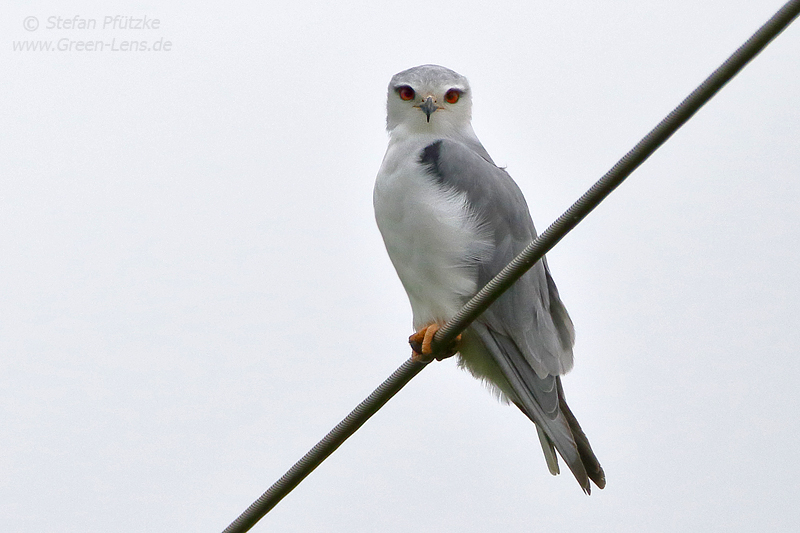 |
| The piercing look of the Black-winged Kite in Stemwede, which even build a nest during its stay © Stefan Pfützke |
American Golden Plover (Pluvialis dominica)
Only 10 previous records existed for this beautiful, but hard to identify species so far, but 2018 saw another 2 records. Especially noteworthy was the bird from Katinger Watt, Schleswig-Holstein (28.-31.05.2018) in breeding plumage, that was successfully twitched by dozens of birders. With increasing knowledge about the identification, hopefully more records will follow in future years!
 |
| Seeing this species in breeding plumage is always a treat © Paul Ehlers |
Laughing Gull (Leucophaeus atricilla)
There are already 9 previous records of Laughing Gulls in Germany, with one bird even staying and returning for 3 summers. However, all these records stem from between 1997 and 2007 and anybody who got into birding or twitching later didn't get a chance to see this species in Germany until 21.12.2018, when a first cycle bird turned up in the city centre of Hamburg and showed beautifully to the twitchers that came the following day. While the bird itself might not have been the most beautiful one (wait till it gets older!), the observations that it allowed for were remarkable!
 |
| This immature Laughing Gull chose to visit the harbour and christmas market of Hamburg © Paul Ehlers |
Franklin's Gull (Leucophaeus pipixcan)
Another American gull that turned up in Germany this year (27.-28.07.2018 in Bonn), even a tiny bit rarer than the Laughing Gull with only 8 accepted records to date, furthermore it was a beautiful adult. However, it wasn't quite as friendly to the twitchers who didn't arrive on the day of discovery, as it flew away very early in the morning, never to be seen again. But isn't it a beauty?
 |
| This adult Franklin's Gull could be twitched in Bonn on July 27th, but disappeared very early in the morning on July 28th never to be found again © Oliver Käseberg |
Pallid Swift (Apus pallidus)
Many northern and central european countries reported an influx of Pallid Swifts during the autumn of 2018 with e.g. 8 reports from the Netherlands, 6 from Sweden and as many as 23 from the UK! Most German birders kept watching the skies, but in vain (several unidentified Swifts!), except for the lucky few who got lucky on Heligoland (13. & 15.11.2018) and some twitchers on Amrum, who'd originally set out for a disappearing Rustic Bunting, but returned home with stunning pictures of a Pallid Swift instead (31.10.2018)!
 |
| This Pallid Swift must've been a great compensation after dipping on a Rustic Bunting on Amrum © Eike Schulze |
Asian Desert Warbler (Sylvia nana)
Even though this tiny bird, which could be observed 19.-27.10.2018 on Heligoland, might be described as drab on the first look, it seems likely to be one of the contenders for the title BIRD OF THE YEAR 2018. This comes from a combination of subtle beauty, accentuated by the piercing yellow eye, its rarity (only 3 previous records: 21.06.-07.07.1981, Bottsand near Kiel (male building nest); 24.-27.05.2002, Heligoland; 20.10.-02.11.2017, Heligoland), its inquisitiveness and some kind of mystery (could it have been the same bird as last year?).
 |
| Could this have been the same bird as in the previous autumn? © Helmut Bähr |
 |
| Like last year's bird this bird was absolutely fearless © Tobias Rautenberg |
Isabelline Wheatear (Oenanthe isabellina)
This bird must likely be described as an underdog. It showed beautifully only on 03.11.2018 on Heligoland and would've been an absolute Mega until very recently (first record 14.-17.10.1999), but has now become more regular in the last years. Still, there were only 11 previous records in Germany and even though the species isn't very colourful, its pastel colours give it a subtle beauty and elegance. Plus, it's one of those enjoyable ID challenges: While initially it can be pretty hard to clinch the ID, once you've observed it long and close enough you'll go home confident and happy about your find!
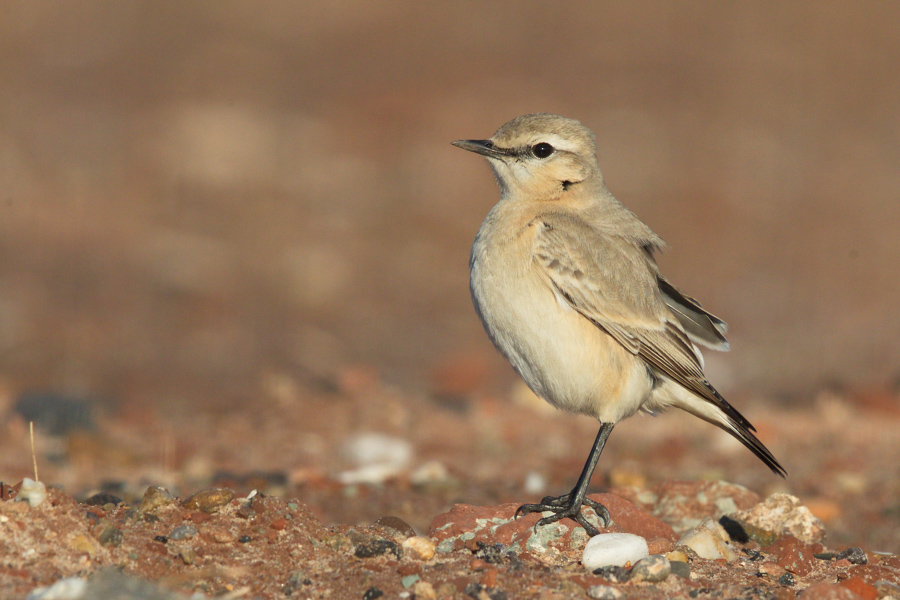 |
| Would you have noticed this rarity in the field? © Jens Voß |
White's Thrush (Zoothera aurea)
This beauty will always be a crowd-favourite. Only few people got to lay their eyes on the bird that was caught and ringed on 26.04.2018 on Heligoland, but isn't this what adds to the fascination of White's Thrush? Its elegancy combined with the mystique surrounding this shy species makes it a dream bird for any birder, add to that its rarity in recent years (only 8 records since 1977, ca. two dozens before that, the last accepted one from 2013) and you've got the perfect contender for BIRD OF THE YEAR 2018. If only it had stayed a little longer...
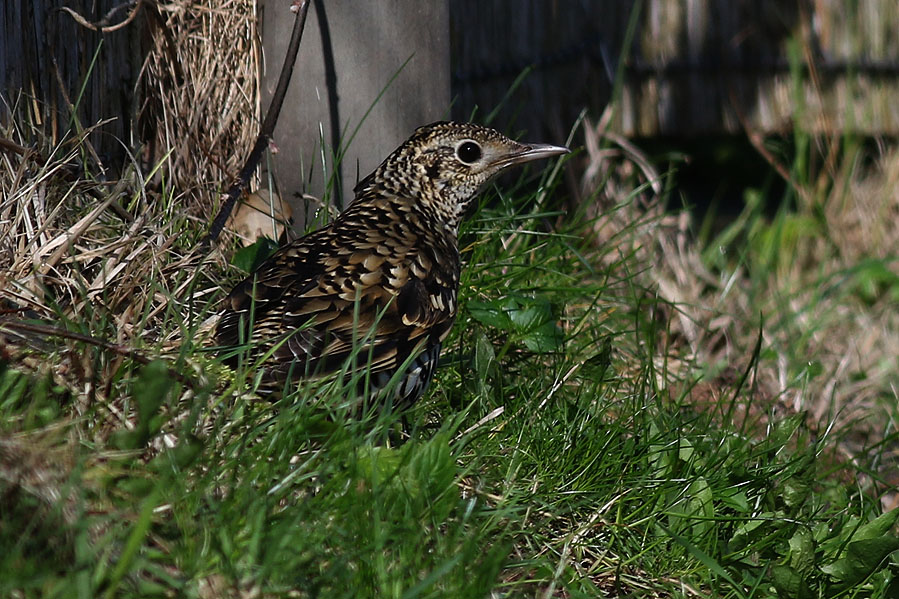 |
| White's Thrushes are very skulky birds, catching one of them as a vagrant must have given a great adrenaline rush to the ringers © Jochen Dierschke |
Rosy Starling (Pastor roseus)
Normally Rosy Starlings wouldn't be considered for this compilation, as they turn up annually in small numbers, mostly as juveniles, which additionally aren't very good looking birds. However, this year southern Europe saw a huge influx of Rosy Starlings in late May and early June, with many thousand smart-looking adults turning up as far west as Italy and hundreds still reaching Spain. German birders were also hoping to get their piece of the cake and even though the numbers weren't nearly as high as south of the Alps the year 2018 still was exceptional with about 30 records, of which around 20 turned up during the influx, mainly in southernmost Germany or on Heligoland or the coast. Even if the Rosy Starlings of 2018 don't receive the title of BIRD OF THE YEAR 2018, their influx certainly has to have been the birding event of the year in Europe!
 |
| Even though not nearly as many Rosy Starlings turned up in Germany as in
southern Europe, their number was still way above average and they made
dozens of birders very happy in 2018 ©Winfried Scharlau |
Pine Bunting (Emberiza leucocephalos)
There are about 21 previous records of Pine Buntings in Germany, nevertheless it was a notoriously hard bird to connect with, with past individuals often quickly disappearing or hiding very well in the vegetation, at least until 2018. However, a bird in Römerstein, Baden-Württemberg that stayed from 24.01.-21.02.2018 deviated from its predecessors and beautifully showed to dozens of happy twitchers, who often still got the feeling of a hard-earned bird, as the bird would prove a challenge to find in the landscape and to safely identify. If you saw that bird, then you really earned it!
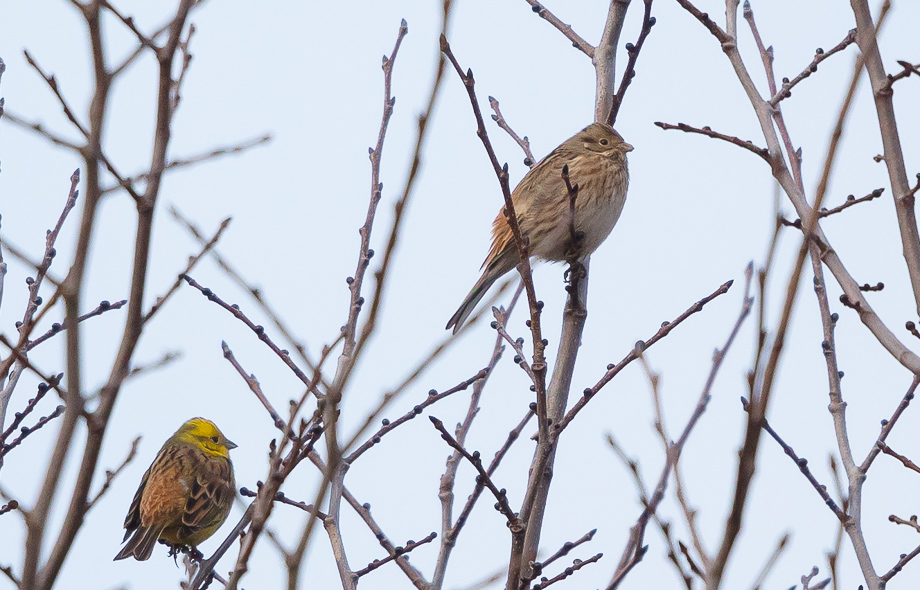 |
This Pine Bunting was a real challenge to many birders, both in terms of finding and identfying it © Oliver Käseberg
|
Cretzschmar's Bunting (Emberiza caesia)
Another favourite for the title BIRD OF THE YEAR 2018 has to be the beautiful Cretzschmar's Bunting that filled hundreds of birders' and photographers' hearts with glee from 30.4.-03.05.2018 at Speicherbecken Geeste after it had been posted online identified as a regular Ortolan Bunting. Luckily some eagle-eyed birders immediately noticed the misidentification and in the following days they, and many more, got to enjoy close-up views of the second Cretzschmar's Bunting to appear in Germany since the 19th century (11 previous records between 1848 and 1879 all from Heligoland, plus one bird on 09.05.2016 on Sylt)!
 |
| Hundreds of twitchers managed to connect with this bird, which posed nicely © Paul Ehlers |
Black-headed Bunting (Emberiza melanocephala)
The information about past occurrences of Black-headed Buntings is very vague, as birds were often considered as escapees in the past and females and juveniles still are impossible to identify safely. It's therefore a fairly recent realization that they are near-annual natural vagrants to Germany. Nevertheless, the species was a blocker, missing from most twitchers lists until last year, when - unforeseen - a pair bred successfully in southern Germany. Birds in the past only rarely stayed for longer than a day, so that twitches were normally unsuccessful. Though the breeding birds of 2017 allowed for the species to find its way onto the list of many twitchers, the 2018 birds were still special on their own. Three males turned up on Heligoland (31.05.2018; 01.-04.06.2018; 26.06.2018), one in the Königshovener Höhe (30.05.2018) in Nordrhine-Westphalia. Adding to their smart looks came the cooperativeness of the first two birds on Heligoland, which made for great photo motives, even for twitchers!
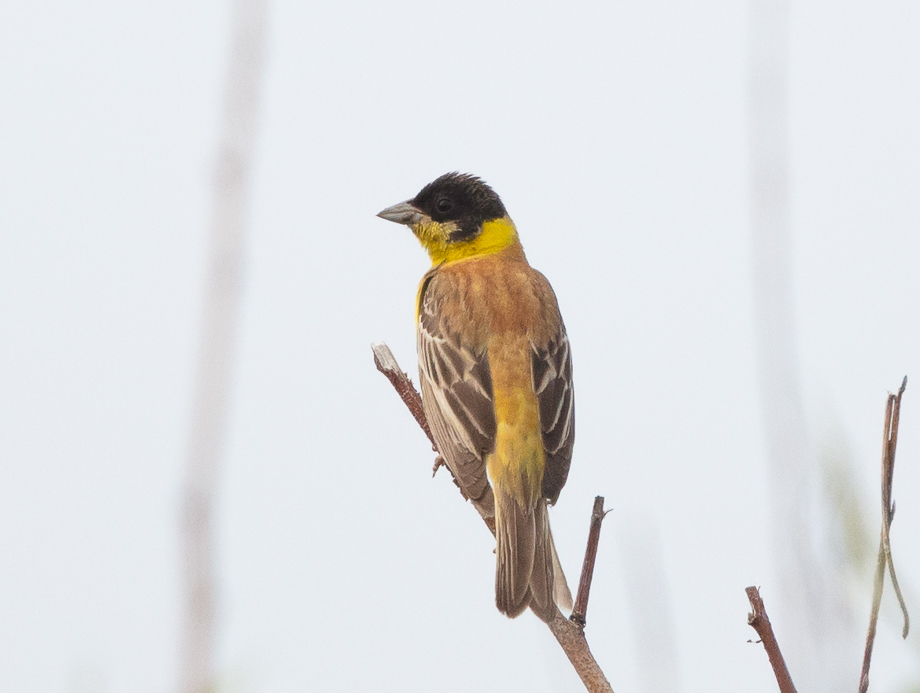 |
| This Black-capped Bunting must've been one of the most cooperative ones to ever show up in Germany © Oliver Käseberg |
Parrot Crossbill (Loxia pytyopsittacus)
Does anyone still remember the hype when the first Parrot Crossbills started to turn up on Heligoland during the autumn of 2013?! The species a huge blocker before that and only very few people had this species on their list, even though many dozens of records had been accepted. After the influx during the winter 2013/14 another influx happened in the winter of 2017/18. Hundreds of birds must have reached Germany during that winter and in the aftermath several breeding attempts, at least one of them successful, could be recorded. It therefore feels like this species must also be mentioned here!
 |
| Hundreds of Parrot Crossbills must've reached Germany in the winter of 2017/18 © Gerd Rotzoll |
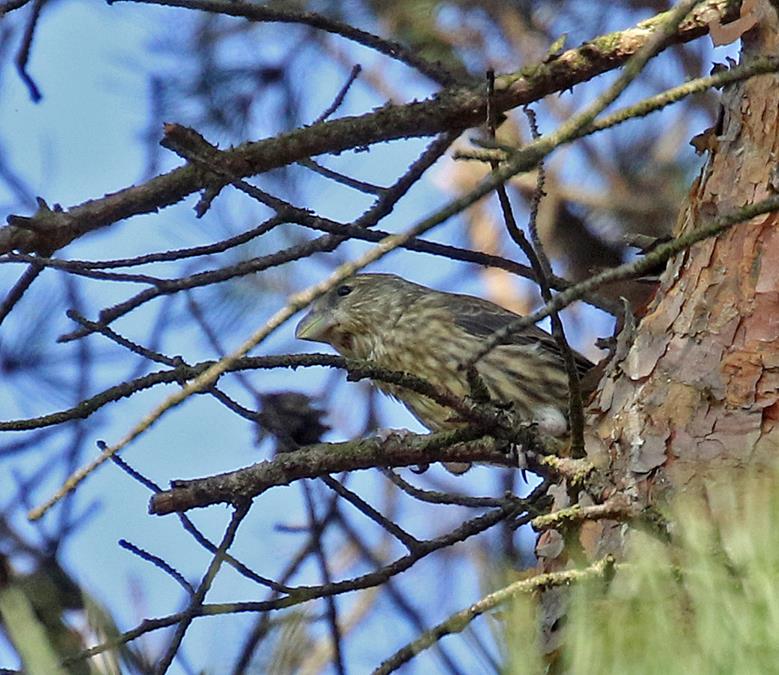 |
| For the first time ever was a successful breeding of the species
recorded in Germany. Seven pairs were present, at least 3 raised
juveniles © Arne Torkler |
Italian Sparrow (Passer italiae)
While it's DNA is still being tested, this bird is likely to become the only addition to the German list from 2018. The bird showed beautifully in early June in a private garden, but unfortunately only very few birders got a chance to observe it, due to difficulties to arrange public access to the site. Nevertheless, this record bears a certain amount of suspense with it: Was this bird the "real deal"? Did it come all the way to northern Germany on its own? What else is lurking out there in private gardens?
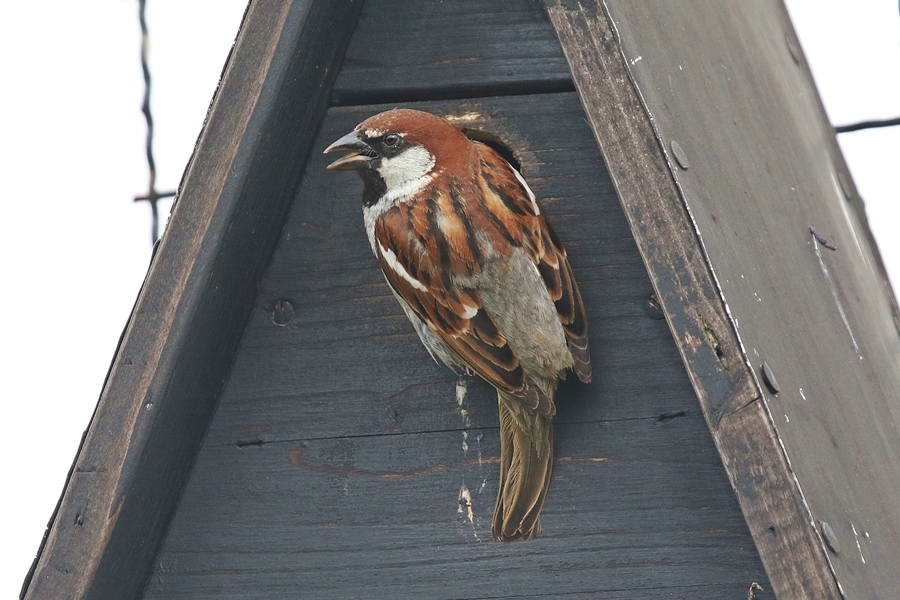 |
| The only new bird for the German list during 2018. At least if it gets accepted © Armin Kreusel |





















Keine Kommentare:
Kommentar veröffentlichen